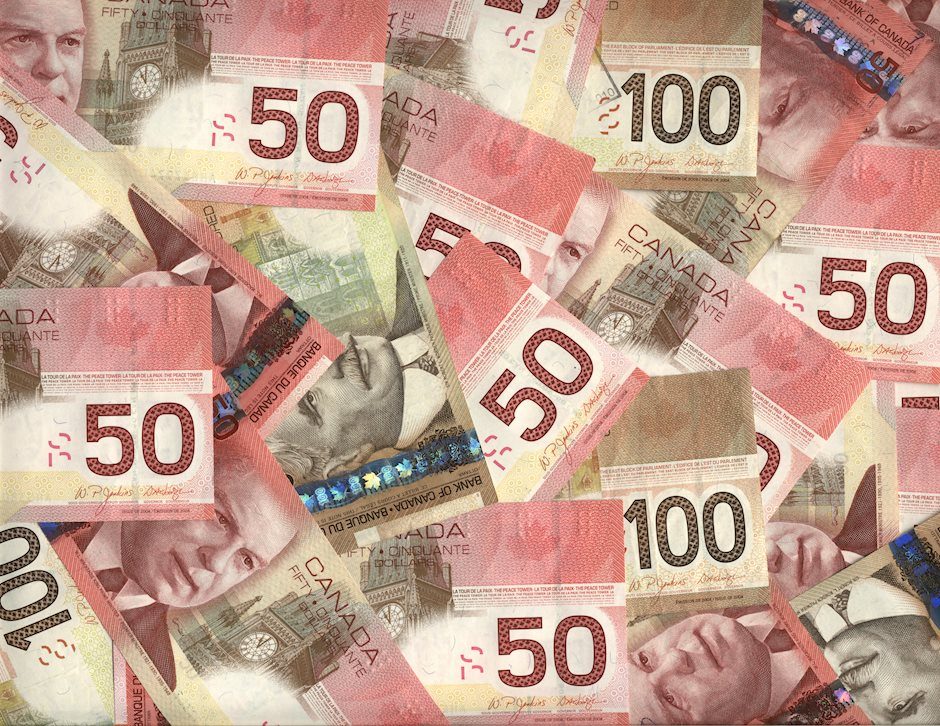USD/CAD rises above 1.4100 as Trump announces to impose a 25% tariff on Canada imports
- USD/CAD rose more than 1% to 1.4178, a level not seen since April 2020.
- The risk-sensitive CAD’s downside is fueled by dampened market sentiment.
- President-elect Donald Trump announced plans to impose a 25% tariff on imports from Canada.

The USD/CAD pair continues to climb, trading near 1.4110 during Tuesday’s Asian session, marking levels last seen in April 2020. The pair has surged over 1%, fueled by weakened market sentiment after President-elect Donald Trump announced plans to impose a 25% tariff on imports from Mexico and Canada, along with a 10% hike in tariffs on all Chinese goods entering the United States (US).
According to Reuters, citing a Canadian source familiar with the matter, US President-elect Donald Trump and Canadian Prime Minister Justin Trudeau had a conversation on Monday night, discussing trade and border security in what was described as a positive exchange.
Separately, Canada’s Deputy Prime Minister stated that the "Canada-US relationship today is balanced and mutually beneficial, particularly for American workers." However, the statement made no reference to Trump’s threat of imposing tariffs.
A drop in crude Oil prices could pressure the commodity-linked Canadian Dollar (CAD). As the largest Oil exporter to the United States (US), Canada’s currency often moves in tandem with Oil price fluctuations. Lower crude prices typically weaken the CAD.
West Texas Intermediate (WTI), Oil price trades around $69.00 at the time of writing. The decline follows reports that Israel and Lebanon have agreed on terms to resolve the Israel-Hezbollah conflict, according to unnamed senior US officials. This development has contributed to easing geopolitical tensions, weighing on Oil prices.
The US Dollar (USD) remains under pressure following comments from Federal Reserve (Fed) officials on Tuesday. Federal Reserve Bank of Chicago President Austan Goolsbee indicated that the Fed is likely to continue lowering interest rates toward a neutral stance that neither stimulates nor restricts economic activity. Meanwhile, Minneapolis Fed President Neel Kashkari highlighted that it remains appropriate to consider another rate cut at the Fed’s December meeting, according to Bloomberg.
Despite this, the USD’s downside risks are limited, supported by strong preliminary S&P Global US Purchasing Managers’ Index (PMI) data. These robust figures have strengthened expectations that the Fed may adopt a more gradual approach to further rate cuts.
Canadian Dollar FAQs
The key factors driving the Canadian Dollar (CAD) are the level of interest rates set by the Bank of Canada (BoC), the price of Oil, Canada’s largest export, the health of its economy, inflation and the Trade Balance, which is the difference between the value of Canada’s exports versus its imports. Other factors include market sentiment – whether investors are taking on more risky assets (risk-on) or seeking safe-havens (risk-off) – with risk-on being CAD-positive. As its largest trading partner, the health of the US economy is also a key factor influencing the Canadian Dollar.
The Bank of Canada (BoC) has a significant influence on the Canadian Dollar by setting the level of interest rates that banks can lend to one another. This influences the level of interest rates for everyone. The main goal of the BoC is to maintain inflation at 1-3% by adjusting interest rates up or down. Relatively higher interest rates tend to be positive for the CAD. The Bank of Canada can also use quantitative easing and tightening to influence credit conditions, with the former CAD-negative and the latter CAD-positive.
The price of Oil is a key factor impacting the value of the Canadian Dollar. Petroleum is Canada’s biggest export, so Oil price tends to have an immediate impact on the CAD value. Generally, if Oil price rises CAD also goes up, as aggregate demand for the currency increases. The opposite is the case if the price of Oil falls. Higher Oil prices also tend to result in a greater likelihood of a positive Trade Balance, which is also supportive of the CAD.
While inflation had always traditionally been thought of as a negative factor for a currency since it lowers the value of money, the opposite has actually been the case in modern times with the relaxation of cross-border capital controls. Higher inflation tends to lead central banks to put up interest rates which attracts more capital inflows from global investors seeking a lucrative place to keep their money. This increases demand for the local currency, which in Canada’s case is the Canadian Dollar.
Macroeconomic data releases gauge the health of the economy and can have an impact on the Canadian Dollar. Indicators such as GDP, Manufacturing and Services PMIs, employment, and consumer sentiment surveys can all influence the direction of the CAD. A strong economy is good for the Canadian Dollar. Not only does it attract more foreign investment but it may encourage the Bank of Canada to put up interest rates, leading to a stronger currency. If economic data is weak, however, the CAD is likely to fall.
Author

Akhtar Faruqui
FXStreet
Akhtar Faruqui is a Forex Analyst based in New Delhi, India. With a keen eye for market trends and a passion for dissecting complex financial dynamics, he is dedicated to delivering accurate and insightful Forex news and analysis.

















